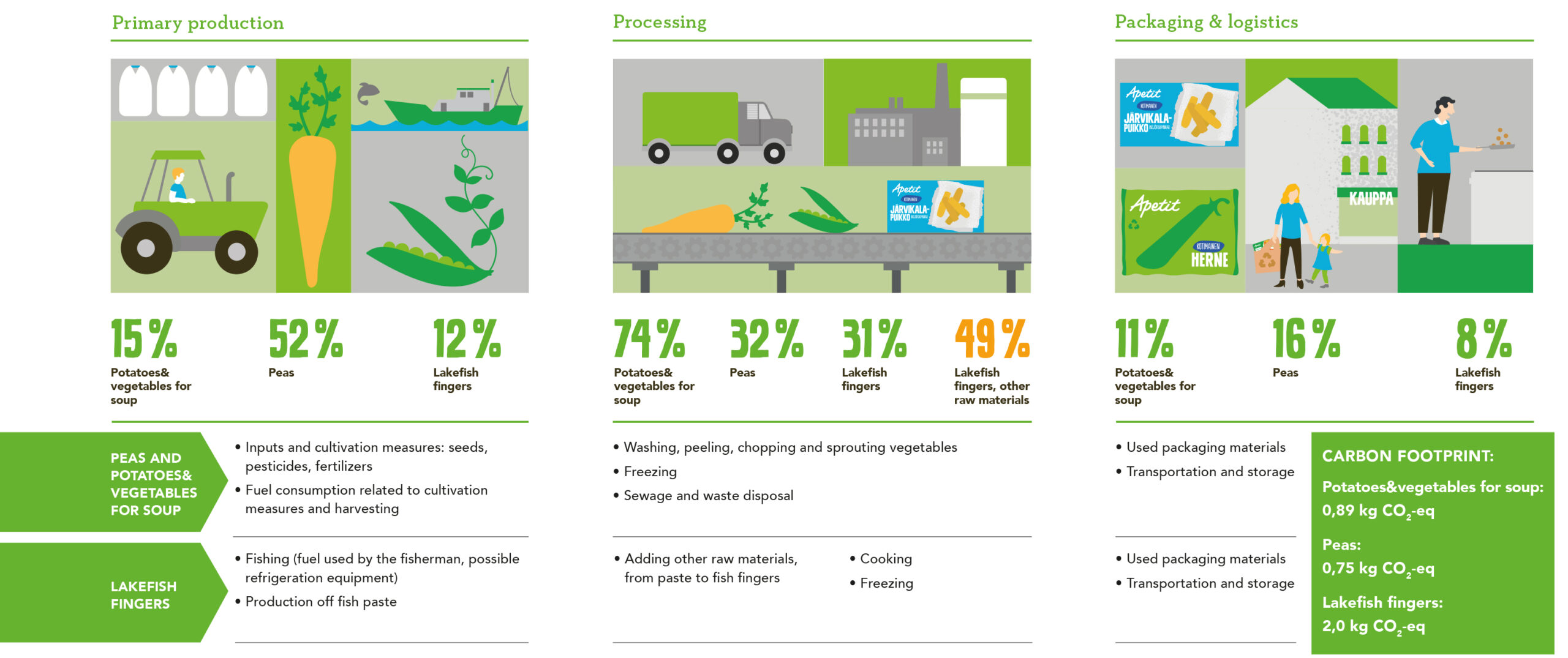Climate impacts of food
Primary production and the food industry carry out continuous development work to reduce the environmental and climate impacts of food production. However, food production and its resource usage influence climate and biodiversity, for example. Food production and food consumption cause approximately one fifth of the carbon footprint, or climate impacts, of all consumption.
Farming influences the surrounding nature and its biodiversity. The environmental impacts of farming arise from nutrient runoff and the production of farming inputs, such as pesticides and fertilizers, for example. Cultivation methods that improve natural soil fertility may reduce environmental impacts. The primary production of raw materials generally accounts for approximately 50 per cent of the carbon footprint of food.
The environmental impacts of production are especially caused by the generation of the heat and electricity used at production facilities. In general, food manufacturing and energy production account for roughly 40 per cent of the carbon footprint of food, while the share of logistics and packaging
materials is approximately 10 per cent.
In its operations, Apetit concentrates on plant-based food solutions and cooperates with both contract growers and researchers to reduce the environmental impacts of farming. Apetit’s plants have reduced their environmental impacts by starting to use electricity produced with wind power, for example.
Apetit determined the environmental footprint of three products – this is how the environmental impacts of food arise
Apetit determined the environmental footprint of some of its selected products. The study analysed the carbon footprint, eutrophication effect and water footprint of Apetit Lakefish Fingers, Apetit Peas and Apetit Potato&Soup Vegetables. Apetit commissioned the study from the Natural Resources Institute Finland.
The study results provide a clear picture of how the climate impacts of Apetit’s frozen products come about. For example, the climate impacts of root vegetable cultivation are small, which increases the role played by the heat and electricity that is used for washing, peeling and chopping root vegetables at Apetit’s production facilities. On the other hand, peas require more nutrients, which increases the share of farming inputs in climate impacts.
Consequently, the essential aspects in Apetit’s work to reduce the environmental impacts of the studied frozen vegetable products are the development of cultivation methods, energy efficiency in production and the utilisation of renewable energy sources. In Apetit Lakefish Fingers, the single largest climate impact arises from non-fish raw materials. As a result, the key factors for Apetit in the reduction the carbon footprint of Lakefish Fingers are good material efficiency and the energy efficiency of Apetit’s own production facilities as the energy consumed by production accounts for approximately one third of the product’s carbon footprint.

